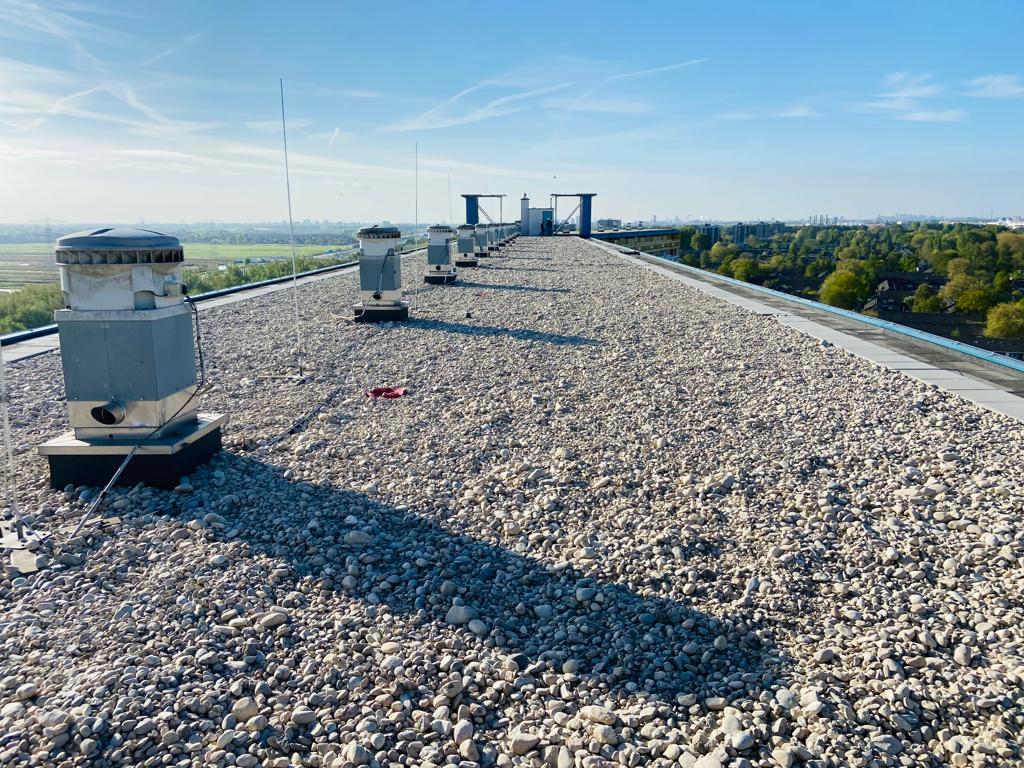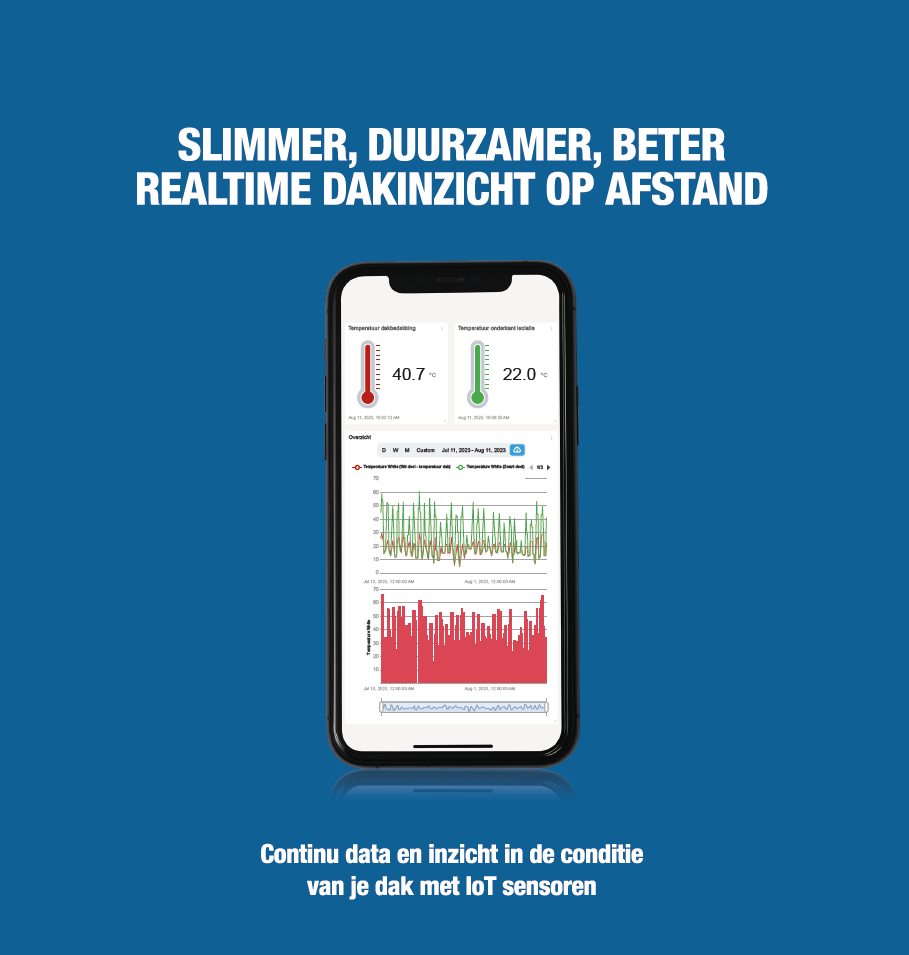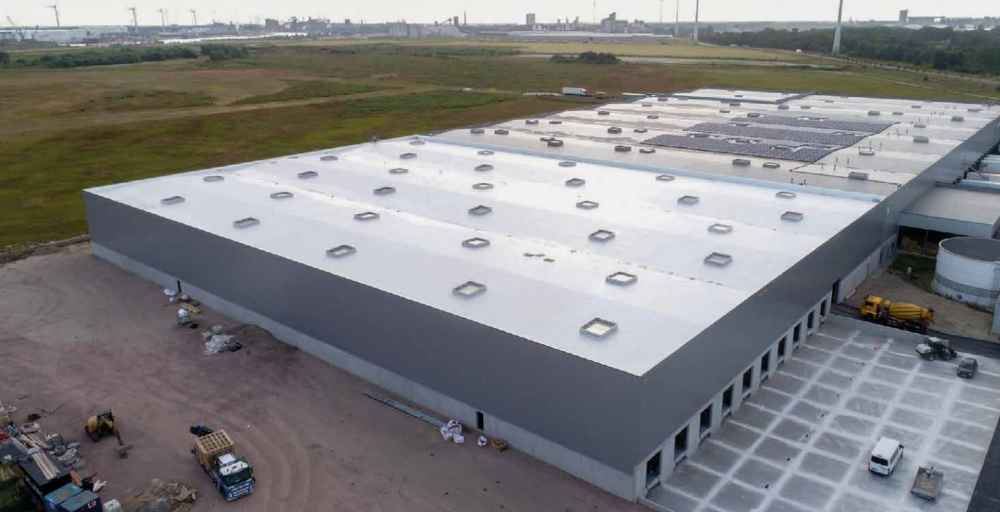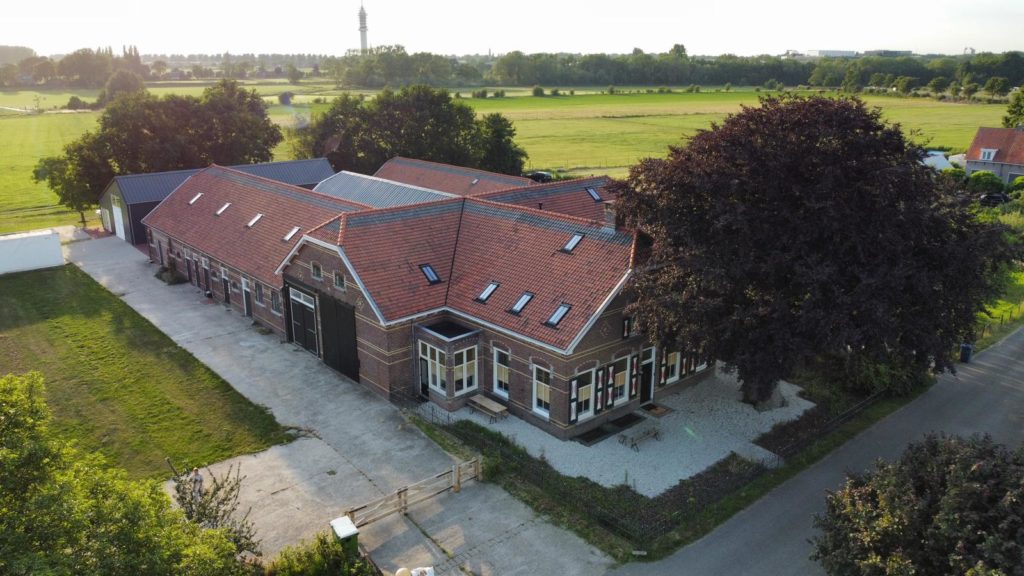Het soort dak op jouw bedrijfspand of woning is van invloed op jouw energierekening en comfort, daar weet Jeroen van de Laar (47 jaar) alles van. Als co-founder van Inscio Roofs, een bedrijf dat data verzamelt over daken, ziet hij alle soorten daken voorbij komen. Van groendak tot het standaard zwarte dak en van een dak met waterretentie tot een wit dak. Maar welk dak zorgt er nu voor dat jouw energierekening niet ‘door het dak’ gaat? Het antwoord op deze vraag vertelt Jeroen ons in dit artikel. Net als het verhaal hoe hij bij toeval Inscio begon en over de nieuwste pilot van het actienetwerk die gaat over daken van koel- en vrieshuizen.
Het begin van Inscio Roofs
‘Het begin van Inscio,’ begint Jeroen zijn verhaal, ‘was er opeens! Ik heb heel lang bij een groot adviesbureau in bouw en vastgoed gewerkt en was hobbymatig bezig met Internet of Things en data. Op een gegeven moment kregen we een vraag van een leverancier van isolerende daken: hij had data nodig uit het dak, maar hij merkte dat er eigenlijk nooit gemeten werd in het dak. Een inspecteur kijkt vaak alleen naar de kwaliteit van de dakbedekking.’ Jeroen installeert sensoren in het dak. ‘Deze sensoren aan de boven- en onderkant van het isolatiemateriaal meten vocht en temperatuur in het dak. Opeens kregen we inzicht in plaatsen waar nog nooit inzicht was.’
De dakpartij is erg te spreken over de data en wordt Inscio’s eerste grote klant ‘Toen zijn we er eigenlijk vol voor gegaan en ineens hadden we een bedrijf. Geen website, geen b.v, we hadden nog niks. Alleen de dienst en dus opeens een klant. Nu 2 jaar later hebben we data van alle soorten daken die je maar kunt bedenken,’ vertelt Jeroen lachend.
Data van daken
‘De sensoren uit de verschillende daken verzenden gegevens naar een grote database. Vanuit daar maken wij overzichten en kunnen we zoveel vergelijken als we willen,’ legt Jeroen uit. ‘We zien snel of een dak afwijkt. De data laten bijvoorbeeld zien of het dak te vochtig is of temperaturen afwijken. Die gegevens sturen we dan door naar de eigenaar van het pand of de partner die het onderhoud doet. Die moet het dak dan even bekijken, want waarschijnlijk is er dan iets niet goed.’
Tijden veranderen
‘15 jaar geleden was een dak zwart en lelijk, dat was een plek waar je zo min mogelijk wilde komen,’ chargeert Jeroen. ‘Een dak moest enigszins isoleren, het mocht niet te veel kosten, zo lang mogelijk meegaan en het moest het water vooral zo snel mogelijk afvoeren’.
Nu is dat helemaal anders, legt Jeroen uit. ‘Dankzij duurzaamheidsambities worden daken steeds intensiever gebruikt als verblijfsruimte (daktuinen), het plaatsen van PV-panelen en het opvangen en geleidelijk afvoeren van hemelwater (retentiedaken). Het dak is gevonden ruimte.’ Hij vertelt verder: ‘Ook het aanzicht van daken is erg belangrijk: een groen dak ziet er natuurlijk veel beter uit.’
Ook het isoleren van een dak is steeds belangrijker geworden. ‘Liefst uitgevoerd met herbruikte en duurzame materialen’, zegt Jeroen. ‘In de winter moeten daken zorgen voor het vasthouden van warmte en in de zomer willen we dat de warmte niet binnendringt. Hoe hoger de isolatiewaarden, hoe beter en hoe lager de energiekosten.’
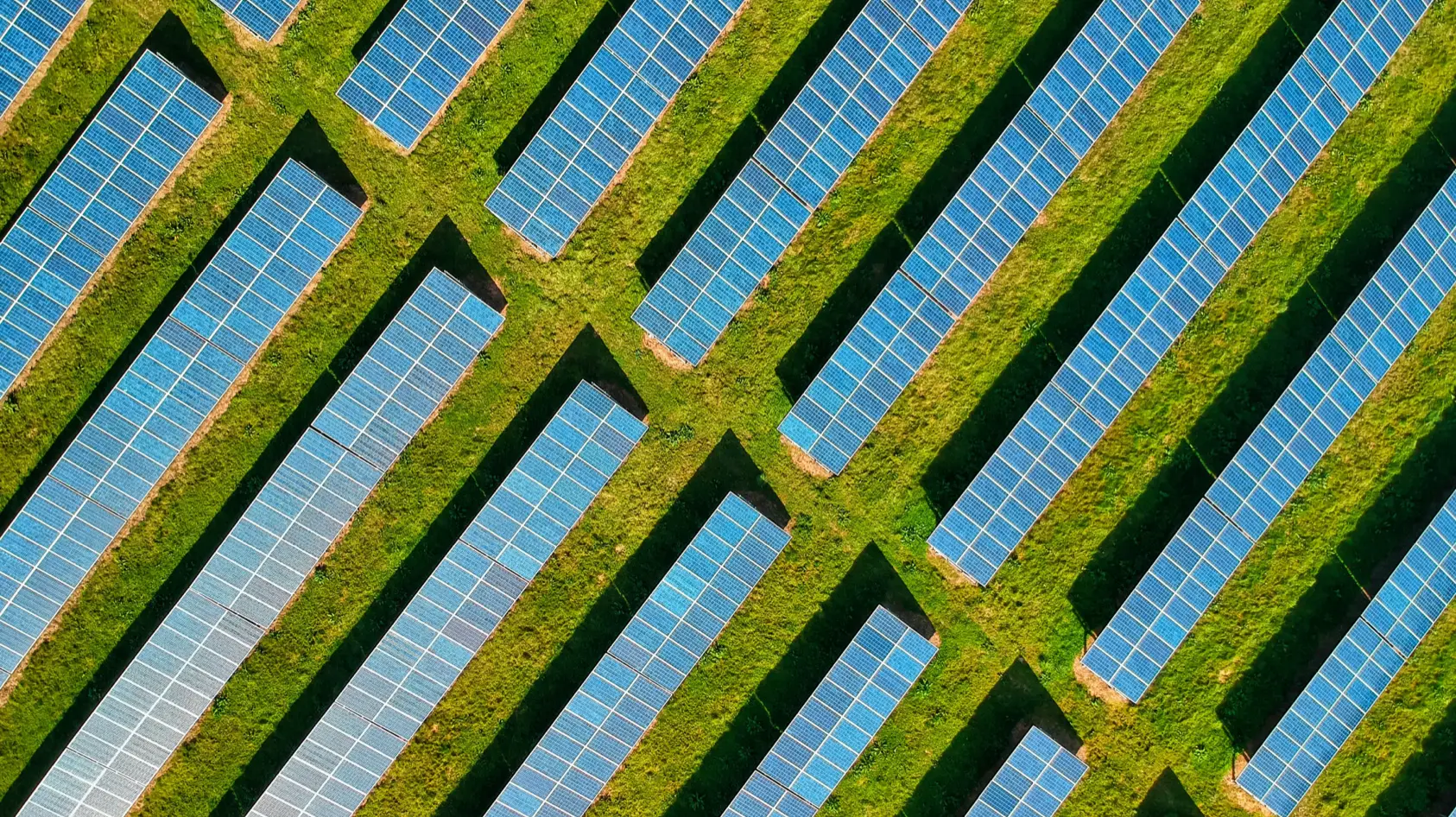
Verschillende soorten daken en maximale temperatuur
Volgens Jeroen komen er in Nederland een aantal daken voor. ‘Het zwarte platte dak zie je toch veruit het meest. Zo’n dak wordt in de zomer echt heel heet, we zien temperaturen van boven de 70 graden Celsius, waardoor een bedrijfspand of woning flink opwarmt. Je hebt dan veel energie nodig om de warmte weg te voeren,’ legt hij uit. ‘Zo’n zelfde dak heb je de laatste jaren ook in het wit. En die maximumtemperatuur ligt met ongeveer 50 graden Celsius veel lager. Een woning of bedrijfspand warmt dan veel minder op en het koelt weer sneller af.’
Jeroen gaat verder: ‘De laatste jaren zien we ook veel groendaken – een dak begroeid met planten, kruiden of grassen. Een andere trend die we zien zijn waterretentie daken. Dit soort daken houden regen vast of geven het water gedoseerd af aan de riolering, zodat daar geen problemen ontstaan. Zoals iedereen zal begrijpen is een groen dak vaak vochtig na een regenbui en op andere momenten droog. Maar als een groendak goed vochtig is, soms door waterretentie daaronder, dan is het echt een verkoelend dak. Zo’n dak wordt op de heetste dagen van de zomer maar iets warmer dan 20 graden Celsius en dat is een enorm verschil met de temperatuur van een zwart dak.’
Dat is volgens Jeroen een goed teken: ‘Op het moment dat de temperatuur aan de bovenkant van het dak lager is dan de buitenlucht, heeft het dak geen invloed meer op de binnentemperatuur. Andere factoren, zoals openstaande ramen of een warme constructie, hebben dat natuurlijk nog wel.’
"15 jaar geleden was een dak zwart en lelijk, dat was een plek waar je zo min mogelijk wilde zijn. Nu worden steeds intensiever gebruikt als verblijfsruimte (daktuinen), het plaatsen van PV-panelen en het opvangen en geleidelijk afvoeren van hemelwater (retentiedaken). Het dak is gevonden ruimte. Maar dat leidt ook tot enorme risico’s.’
Pilot: witte daken op koel- en vrieshuizen
In een nieuwe pilot van het actienetwerk helpt Jeroen een handje mee. Uit een onderzoek van de Bedrijventereinentafel bleek dat verschillende koel- en vrieshuizen nog altijd een zwart dak hebben. ‘Zoals ik net uitlegde is de temperatuur van een zwart dak op een zonnige dak wel meer dan 70 graden Celcius, enorm warm. Zij hebben dus erg veel energie nodig om die koel- en vriescellen op temperatuur te houden en de warmte af te voeren,’ legt Jeroen uit.
De nieuwe pilot werkt als volgt. ‘De helft van het dak schilderen we wit, zodat de maximale temperatuur 50 graden Celcius is. Een simpele en niet hele dure ingreep. Aan beide kanten van het dak, dus onder het zwarte én witte gedeelte, plaatsen wij sensoren. Zo kunnen we precies zien wat de invloed van die dakkleur nou eigenlijk is op het energieverbruik. Zo makkelijk kan het zijn.’

